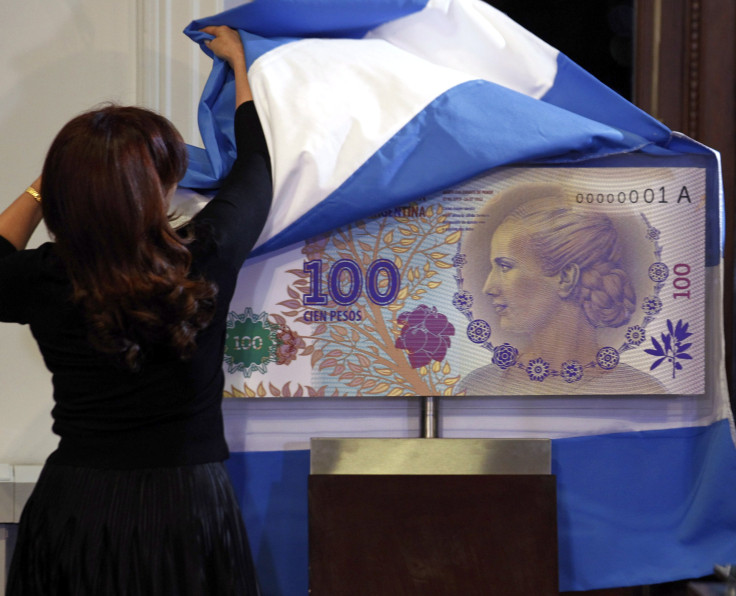How The Venezuelan Bolivar, The Argentine Peso, The Brazilian Real And The Mexican Peso Fared Against The Dollar In 2013

Latin American currencies have not had their best year in 2013. The Venezuelan peso has gained the distinction of being the currency that lost the most value in the world relative to the dollar, after the Iranian rial and the Syrian pound. And several of Venezuela's neighbors, riddled by inflation and unemployment, saw their currencies also plummet.
Uncertainty and a lack of cash flow will continue to harm Latin American currencies for the remaining months of the year, to different degrees.
Venezuelan Bolívar
It does not matter what President Nicolás Maduro tries to help his country’s deeply troubled economy, including the request of emergency powers to try and put an end to the crisis. Venezuela’s woes seem here for the long run.
The bolívar crowned the list of devalued Latin American currencies, dropping 31.74 percent versus the U.S. dollar since January, and even losing 62.36 percent of its value on the black market. The plummeting of the currency has brought about very high inflation in Venezuela, which the government has tried to cap by imposing tough price controls and even by occupying militarily private stores and chains.
Official government data puts the inflation rate at 50 percent, but according to Johns Hopkins University professor Steve Hanke’s calculations, the real numbers might be clocking in the triple digits with a 283 percent implied annual inflation rate for 2013.
Argentinian peso
Next in the list is Argentina, whose peso started the year at an exchange rate of 4.9 per dollar, but has dropped almost 20 percent since then. The Argentinian Central Bank predicts a “continuous but stable” decline for the remaining of the year, and it is expected that the peso will still drop another 1.44 percent, to 6.15 per dollar.
Inflation has also been a great problem for Argentina this year, with President Cristina de Kirchnner’s administration swearing it was controlled at 15 percent, but independent studies pointing out a higher number, closer to 25 percent.
The black market took advantage of the situation, exchanging dollars for a whopping 10 pesos. The government launched a fiscal amnesty, which encouraged citizens to buy state bonds or invest in real estate or state-owned companies, no questions asked on where the money came from. However, only $379 million were collected, 10 percent of the expected amount.
Brazilian real
The third most devalued Latin American currency, Brazil’s real could have the hardest time among major Latin American currencies recovering the 17 percent lost to the dollar during 2013. It is now traded at 2.25 reais per dollar.
Analysts point at the slow growth predicted for this year and next as an obstacle for the recuperation of the real. Brazil’s GDP is expected to grow 2.4 percent this year, a huge leap from last year’s 0.9 percent but still a far cry from pre-global recession numbers.
President Dilma Rousseff’s administration’s biggest woes this year were inflation and unemployment -- both seem under control per October numbers: joblessness fell to a record low of 5.2 percent, according to official numbers. Inflation, on the other hand, is expected to remain steady at 5.8 percent for the last few months of 2013, according to economists surveyed by the Brazilian central bank.
Mexican peso
Mexico’s unique position, both geographical and commercial, of closeness to the United States put the country in a vulnerable position: whatever happened to U.S. economy, it would bring immediate repercussions to the southern neighbor.
And as such, the slowness of the economy in the U.S. was noticed in Mexico with declining trade and falling remittances from immigrants, on which the country is largely dependent. And whereas the situation in the U.S. is returning to normal, it will take a little longer for Mexico to follow.
The Mexican peso has stayed largely stable throughout 2013, at 12.9 pesos per American dollar. Analysts predict a slow drop, reaching 13.05 pesos, but it is expected that the exchange rate will go back up in early 2014.
© Copyright IBTimes 2024. All rights reserved.





















